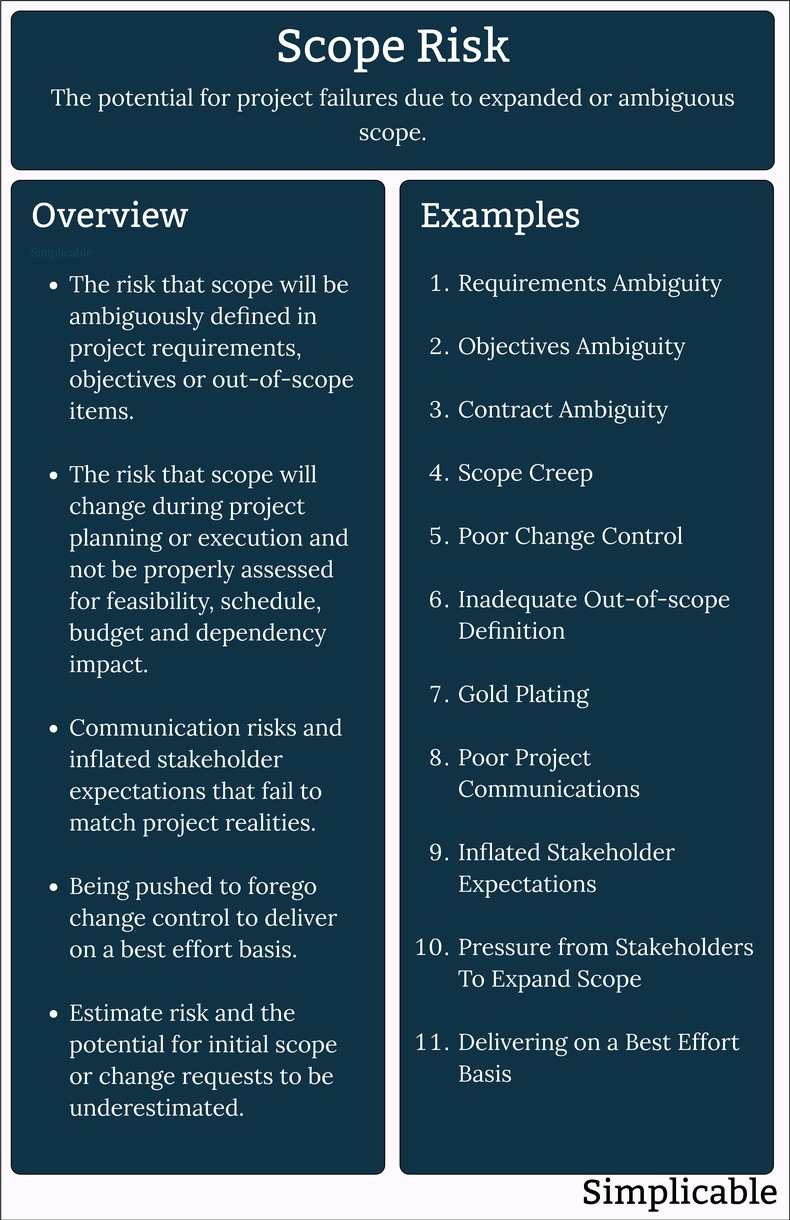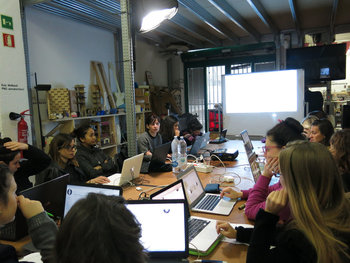|
| |
Scope risk is the potential for project failures related to uncontrolled change or ambiguous requirements and objectives. This includes the risk that your initial scope and out-of-scope definitions will by open-ended or unclear. Scope risk also includes the potential that scope will change over time without proper adjustments to schedule, budget and dependencies. The following are common examples of scope risk.
Ambiguous ObjectivesProject targets that are imprecise and open-ended such as "improve customer experience." Ambiguous RequirementsOpen-ended requirements such as "the system shall be secure."Ambiguous ContractsContracts that are unclear in some way resulting in expanded scope for a project. For example, a contact that states that you will provide a "design" to a vendor. This is quite open-ended whereby the vendor may demand some great variety of design artifacts.
Uncontrolled ChangeChanges such as additional features that are informally adopted.Stakeholder ExpectationsStakeholders who have unstated expectations for what will be delivered. Such stakeholders may be dissatisfied when these expectations aren't met and push for these changes to be incorporated without proper change control.Project Planning FailuresFailure to base your project plan on a stable set of requirements, constraints and assumptions.Change Control FailuresAccepting change without reassessing feasibility, plans, budget, schedule and dependencies.MiscommunicationMiscommunication and misinterpretations that cause scope or imagined scope to expand.Best Effort BasisStakeholders or sponsors who push project teams to accept change that is probably impossible to deliver to schedule and budget but to "try their best."Gold PlatingProject members who add additional quality or features to the project beyond what's in the requirements.Internal ChangeFactors within your control that force scope changes. For example, you find that a design your project team created is not feasible such that a new design is required.External ChangeFactors beyond your control that force scope changes. For example, a merger or acquisition that causes broad changes to processes.DependenciesDependencies that force change to scope. For example, a database you will use that is suddenly decommissioned.Estimate OptimismOverly optimistic estimates such that scope is greatly underestimated from the start.SummaryScope risk is the potential for scope to be underestimated, ambiguous or expanded in an uncontrolled fashion resulting in poor project performance or failures.DiscussionFrom a pragmatic perspective, a project fails if major stakeholders feel that it has failed. As such, expectations and imagined scope are relevant to scope risk whereby a paper trail that states something is out-of-scope can be less important that communication and acceptance.Next: Project Risk
If you enjoyed this page, please consider bookmarking Simplicable.
© 2010-2023 Simplicable. All Rights Reserved. Reproduction of materials found on this site, in any form, without explicit permission is prohibited.
View credits & copyrights or citation information for this page.
|






























